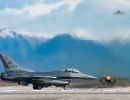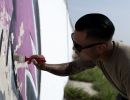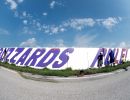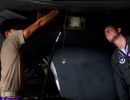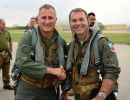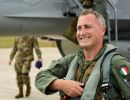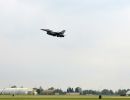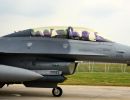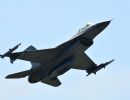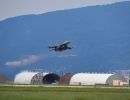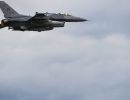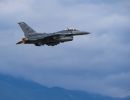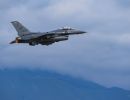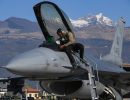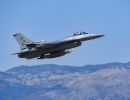![]()
View the Actual Orders
[Contributed by Bruce W. Burns]
LANL-3 Radiation Exposure of Aircrews in Mushroom Clouds
During the 1955 TEAPOT and the 1956 REDWING nuclear test series, manned aircraft were used to map the amount and distribution of radiation within some of the resulting mushroom clouds. The objective was to obtain information needed to plan for the safe and effective use of military aircraft in cloud areas during combat operations.
Studies conducted in 1953 using animal subjects in drone aircraft had previously shown that it would be safe for manned aircraft to enter atomic clouds relatively soon after detonation. Penetrations of clouds from low-yield detonations were made during Operation TEAPOT in 1955. Penetrations of the larger clouds from high-yield detonations were made during Operation REDWING in 1956. Special radiation exposure limits, in excess of the usual 3.9 roentgens maximum permissible exposure limit, were established for some of these flight crews.
During Operation TEAPOT, four Air Force officers were permitted to receive up to 15 roentgens, and two received this amount. Exposures of up to 25 roentgens were permitted during Operation REDWING, but no one received this amount. The largest exposures were approximately 15 roentgens for three officers.
Pre- and post-mission urine tests and evaluation in whole-body counters showed no significant internal deposition of fission products or unfissioned plutonium. This work was supported by the U.S. Atomic Energy Commission. (This experiment was referenced in the Markey report and included in The DOE Roadmap of February 1995)
Project 2.8b
Manned Penetration of Atomic Clouds
Manned Penetration of Atomic Clouds, was a study to measure the radiation dose rate and dose received by air crews flying near and into the nuclear cloud. Specific information was sought by the Air Force on radiation dose rates inside the cloud, the total dose received during 96 passage through the cloud, and the dose received on the return flight. In addition, it is likely that lead vests were also tested for their effectiveness in shielding the crew against radiation. Seven aircraft penetrations were made through the nuclear clouds of five detonations, which ranged in yield from eight to 30 kilotons. Project personnel instrumented F-84s, B-36s, B-57s, and T-33s to measure gamma radiation dose rates. All instrumentation was prepared and checked for proper operations on the day before each shot. Typically, two automatic recording dose-rate meters were used in each aircraft. One was mounted in the nose compartment, and the other in the rear of the cockpit. A non-recording meter for use by the pilot was also installed in each aircraft. In addition to the dose-rate meters, a number of film devices were used. National Bureau of Standards film packets were placed in the cockpit and nose of each aircraft near the recording dose rate meter to determine accumulated radiation dose at the recorders during the mission. The pilot of each aircraft was accompanied by a technical observer in all aircraft but the F-84, which had a maximum crew of one. Pilots and technical observers wore film badges issued by the Radiation Safety Division of the AFSWC 4926th Test Squadron. The pilot and technical observer also carried a number of small pieces of Dupont dental x-ray film. One special film pack was designed to measure internal body radiation dosage. This film packet consisted of nine small disks of film enclosed in a watertight capsule attached to a string. The capsule containing the film was swallowed by the technical observer and the pilot prior to take-off and retrieved after the flight was completed. A similar capsule containing film was attached to the outside of the pilot's flight suit near his stomach. The pilot and the technical observer wore lead vests to reduce radiation exposure to the body (46: 112: 284: 306). 97 Typically, the aircraft left Indian Springs AFB before shot- time, climbed to an altitude of about 40,000 feet, and flew to a position about 48 kilometers east of the ground zero to observe the detonation and the subsequent development of the nuclear cloud. The aircraft then flew by the cloud to estimate the time required to fly through the most dense section of the cloud. The aircraft then flew through the cloud. The technical observer, who had a stopwatch, recorded the time of entry into and exit from the visible cloud. In addition, an automatic dose-rate recording meter was also used to measure time in the cloud. After emerging from the cloud, the aircraft returned immediately to Indian Springs AFB, and the crew and instruments were removed from the aircraft. Crew members left the aircraft by climbing onto a forklift, which lowered them to the ground. They were then decontaminated. A description of these procedures is found in section 5.3 of this volume (46; 80; 306). For these missions, the Test Manager authorized a special exemption to the radiation exposure limit for four Project 2.8b Air Force officers. Each officer was authorized to receive a total of 15 roentgens whole-body gamma radiation during participation in the project (285).

























